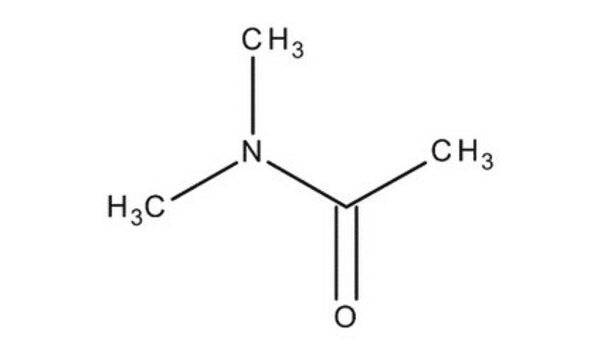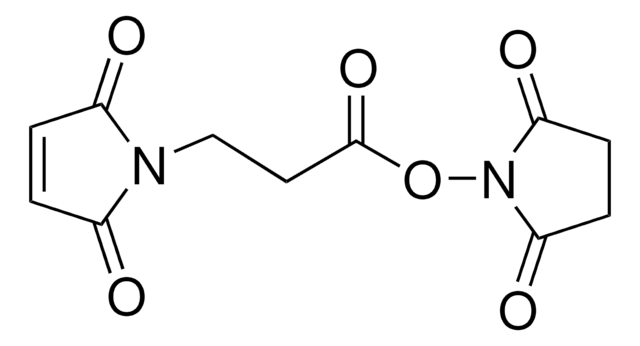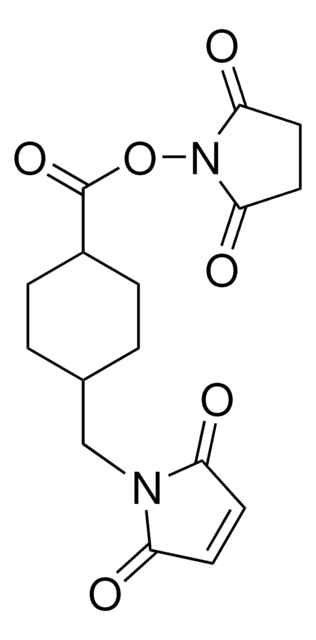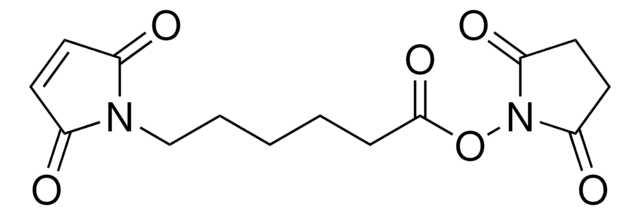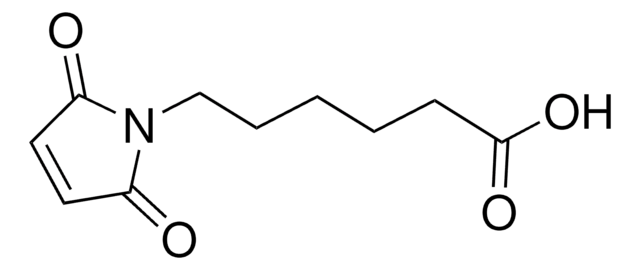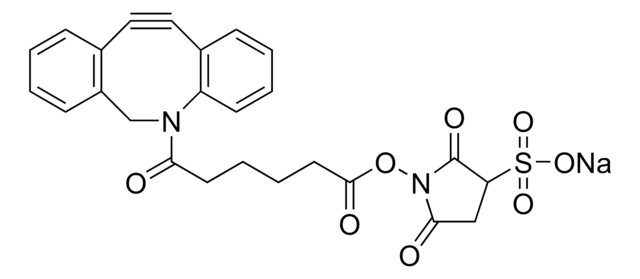Wichtige Dokumente
803235
Sulfo-EMCS (N-(ε-maleimidocaproyloxy) sulfosuccinimide ester)
About This Item
Empfohlene Produkte
Form
powder
Mol-Gew.
410.33
Eignung der Reaktion
reagent type: cross-linking reagent
Lagerbedingungen
desiccated
Löslichkeit
water: soluble
Funktionelle Gruppe
maleimide
Versandbedingung
ambient
Lagertemp.
2-8°C
SMILES String
O=C1CC(S(=O)([O-])=O)C(N1OC(CCCCCN2C(C=CC2=O)=O)=O)=O.[Na+]
InChI
1S/C14H16N2O9S.Na/c17-10-5-6-11(18)15(10)7-3-1-2-4-13(20)25-16-12(19)8-9(14(16)21)26(22,23)24;/h5-6,9H,1-4,7-8H2,(H,22,23,24);/q;+1/p-1
InChIKey
MIDXXTLMKGZDPV-UHFFFAOYSA-M
Allgemeine Beschreibung
Leistungsmerkmale und Vorteile
- Reactive groups: sulfo-NHS ester and maleimide
- Reactive towards: amino and sulfhydryl groups
- Sulfo-NHS ester end couples with primary amines at pH 7-9 to form stable amide bonds
- Maleimide reacts with -SH groups at pH 6.5-7.5, forming stable thioether linkages
- Non-cleavable
- Water-soluble (compare to EMCS)
- Aliphatic spacer offers low potential for eliciting an immune response
Vorsicht
Lagerklassenschlüssel
11 - Combustible Solids
WGK
WGK 3
Flammpunkt (°F)
Not applicable
Flammpunkt (°C)
Not applicable
Hier finden Sie alle aktuellen Versionen:
Analysenzertifikate (COA)
Leider sind derzeit keine COAs für dieses Produkt online verfügbar.
Wenn Sie Hilfe benötigen, wenden Sie sich bitte an Kundensupport
Besitzen Sie dieses Produkt bereits?
In der Dokumentenbibliothek finden Sie die Dokumentation zu den Produkten, die Sie kürzlich erworben haben.
Kunden haben sich ebenfalls angesehen
Unser Team von Wissenschaftlern verfügt über Erfahrung in allen Forschungsbereichen einschließlich Life Science, Materialwissenschaften, chemischer Synthese, Chromatographie, Analytik und vielen mehr..
Setzen Sie sich mit dem technischen Dienst in Verbindung.